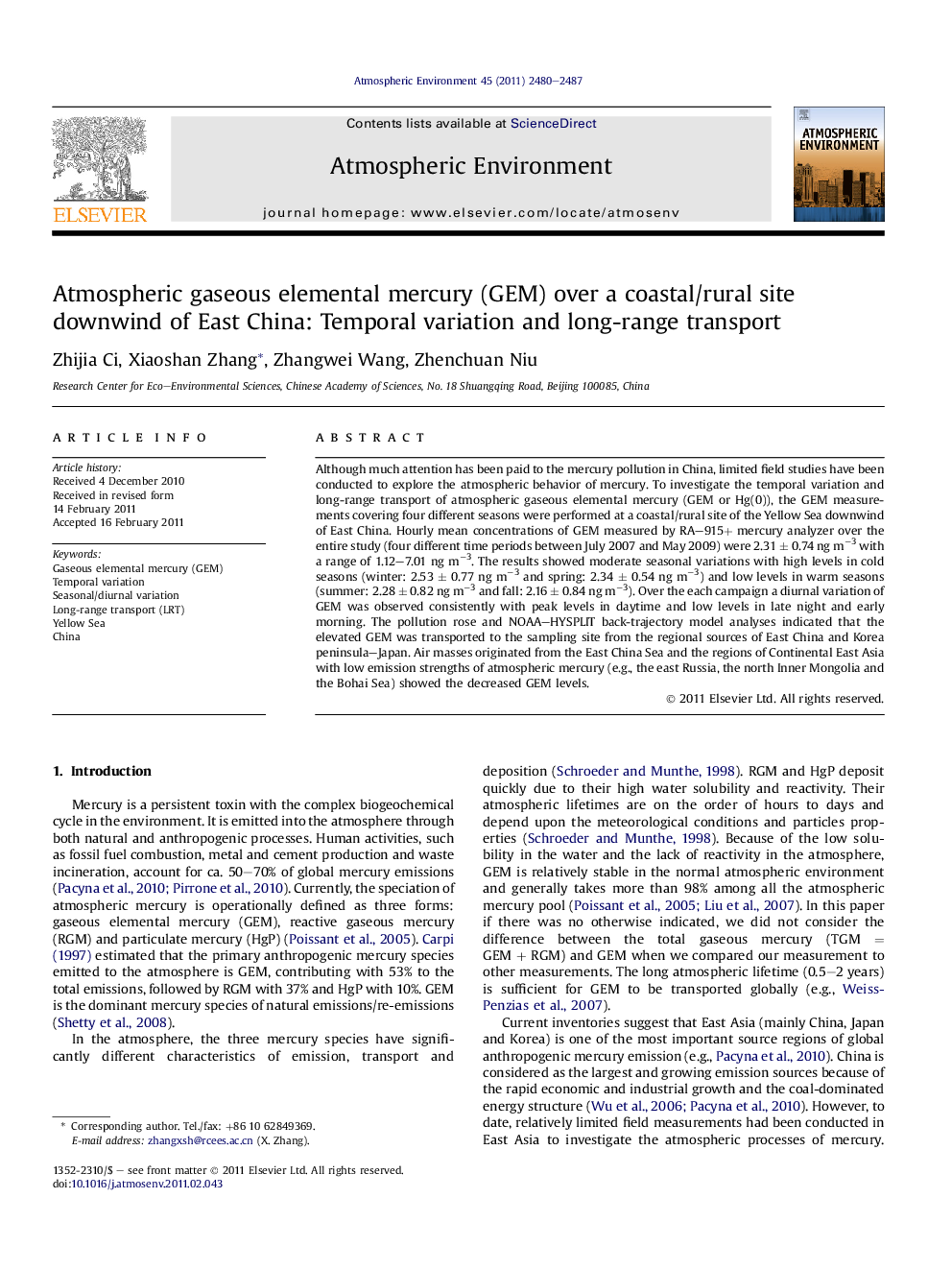| Article ID | Journal | Published Year | Pages | File Type |
|---|---|---|---|---|
| 4439868 | Atmospheric Environment | 2011 | 8 Pages |
Although much attention has been paid to the mercury pollution in China, limited field studies have been conducted to explore the atmospheric behavior of mercury. To investigate the temporal variation and long-range transport of atmospheric gaseous elemental mercury (GEM or Hg(0)), the GEM measurements covering four different seasons were performed at a coastal/rural site of the Yellow Sea downwind of East China. Hourly mean concentrations of GEM measured by RA–915+ mercury analyzer over the entire study (four different time periods between July 2007 and May 2009) were 2.31 ± 0.74 ng m−3 with a range of 1.12–7.01 ng m−3. The results showed moderate seasonal variations with high levels in cold seasons (winter: 2.53 ± 0.77 ng m−3 and spring: 2.34 ± 0.54 ng m−3) and low levels in warm seasons (summer: 2.28 ± 0.82 ng m−3 and fall: 2.16 ± 0.84 ng m−3). Over the each campaign a diurnal variation of GEM was observed consistently with peak levels in daytime and low levels in late night and early morning. The pollution rose and NOAA–HYSPLIT back-trajectory model analyses indicated that the elevated GEM was transported to the sampling site from the regional sources of East China and Korea peninsula–Japan. Air masses originated from the East China Sea and the regions of Continental East Asia with low emission strengths of atmospheric mercury (e.g., the east Russia, the north Inner Mongolia and the Bohai Sea) showed the decreased GEM levels.
► Elevated GEM levels were observed at a coastal/rural site downwind of East China. ► GEM showed high levels in cold seasons and low levels in warm seasons. ► GEM showed peak levels in daytime and low levels in late night and early morning. ► Complicated patterns of GEM transport from different source regions were recorded.
